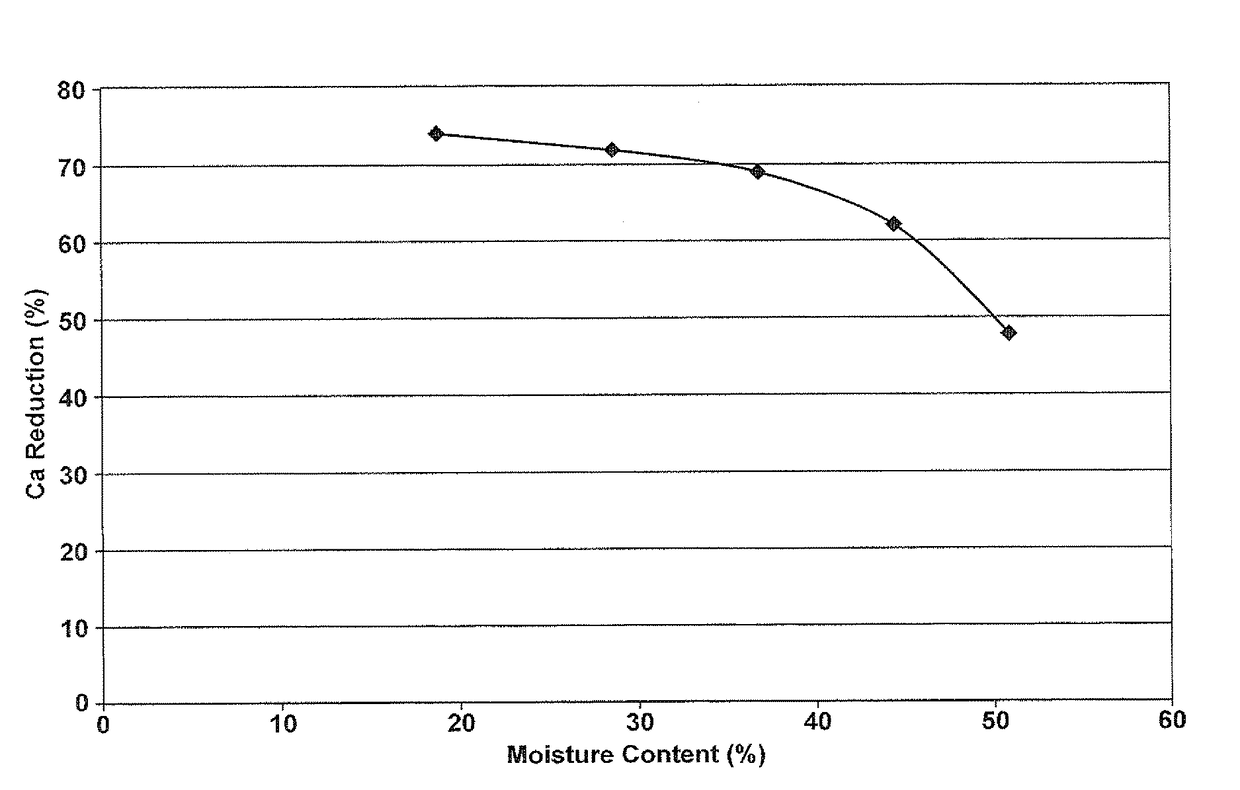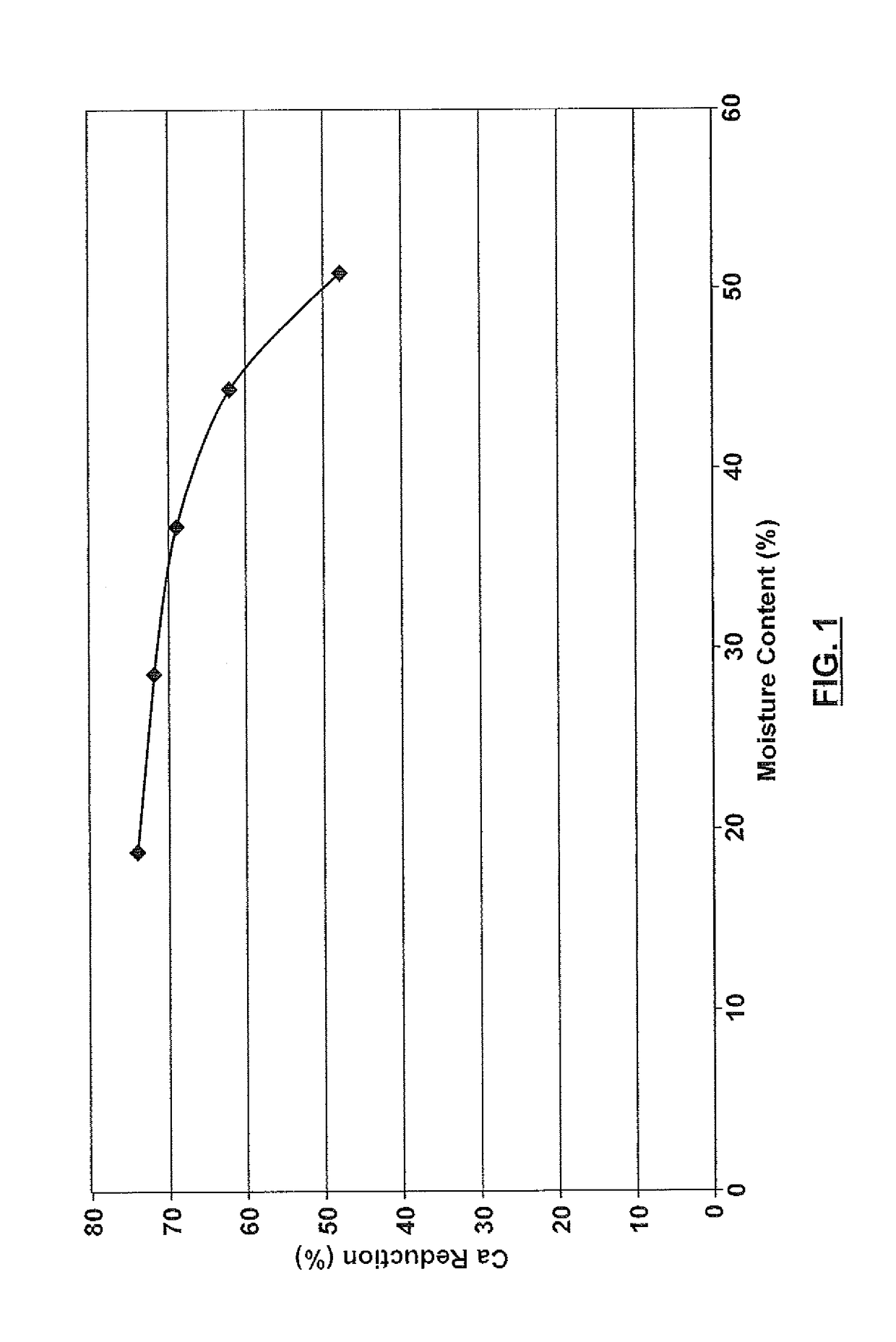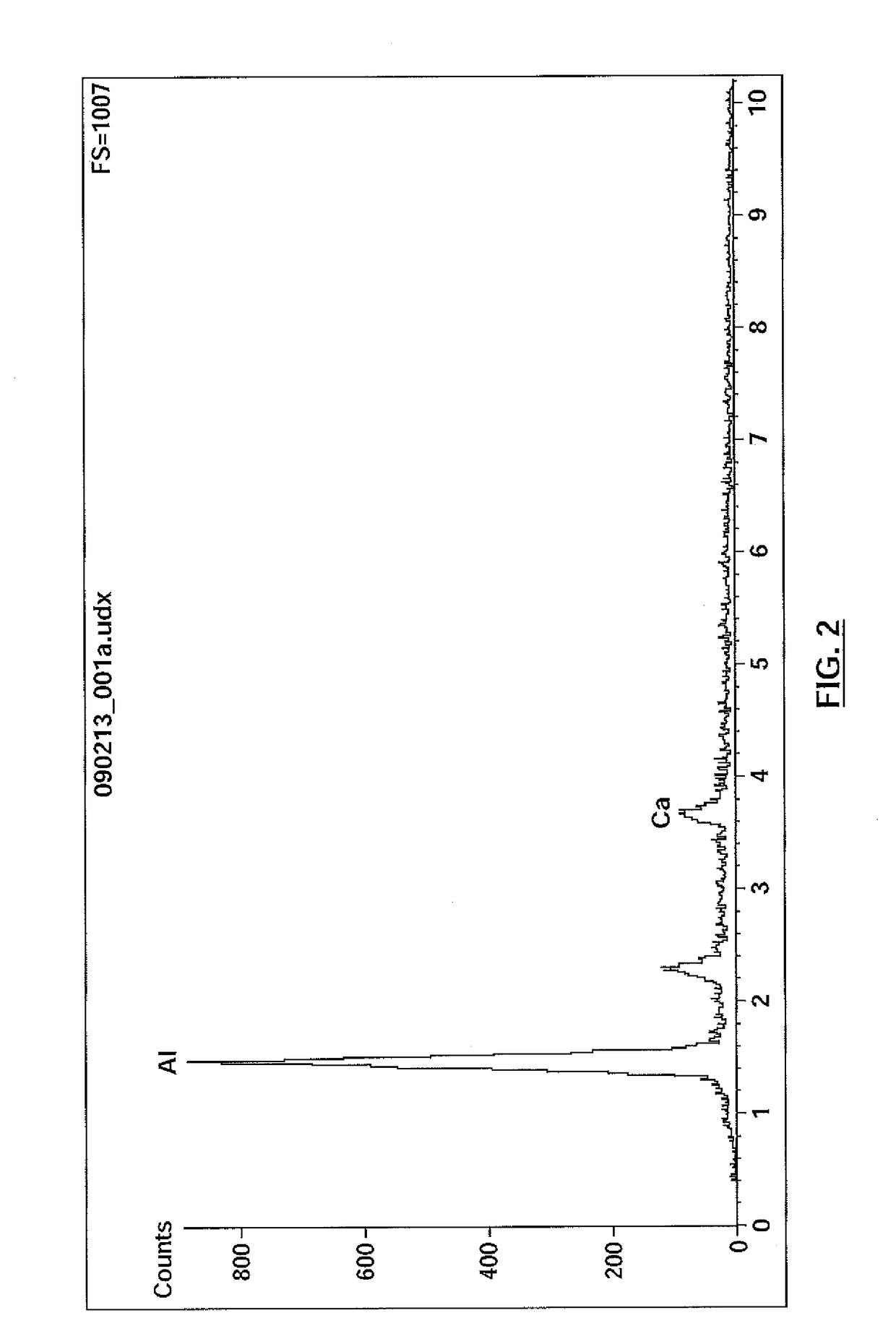Resin for precipitation of minerals and salts, methods of manufacture and uses thereof
a technology of scale control resin and minerals, applied in the direction of water/sewage treatment by ion exchange, nuclear engineering, separation processes, etc., can solve the problems of sodium-rich water being released to downstream water treatment plants, the efficiency of heat exchange across these surfaces is reduced, and the relative cost and inconvenience of sodium-rich water is reduced. , to achieve the effect of increasing the scale control efficiency of scale control resin
- Summary
- Abstract
- Description
- Claims
- Application Information
AI Technical Summary
Benefits of technology
Problems solved by technology
Method used
Image
Examples
example 1
n of a Calcium-Functionalized Weak-Acid Ion-Exchange Resin
[0086]This Example provides a suitable procedure for the production of a calcium-functionalized weak-acid ion-exchange resin.
[0087]Materials:[0088]200 mL Lewatit S8227 ion exchange resin (Lanxess Sybron Chemicals, Inc.)[0089]˜900 mL reverse osmosis / deionized (RO / DI) water[0090]25 g calcium carbonate[0091]2.2 g calcium chloride
[0092]Procedure:[0093]1. Place the 200 mL of Lewatit S8227 ion exchange resin in a 1 L beaker. Add a large (2″) Teflon-coated magnetic stir bar and fill to the 1000 mL mark with RO / DI water.[0094]2. Place the beaker on a hotplate / stirrer and adjust the mixing speed so that the resin is fully fluidized in the water.[0095]3. Heat the mixture to 80° C. Monitor the temperature with an accurate thermometer and ensure that the temperature stabilizes at 80° C.[0096]4. When the temperature has stabilized, add 25 g of calcium carbonate and 2.2 g of calcium chloride.[0097]5. Allow to react for a minimum of five ho...
example 2
n of an Aluminum-Functionalized Weak-Acid Ion-Exchange Resin
[0103]This Example provides a suitable procedure for the production of an aluminum-functionalized weak-acid ion-exchange resin
[0104]Materials:
[0105]Aluminum sulfate
[0106]Sodium bicarbonate
[0108]Lewatit S8227 ion exchange resin
[0109]RO / DI water
[0110]Procedure:
1. Prepare aluminum hydroxycarbonate hydrate powder as follows:
[0111]a. Dissolve 116 g of aluminum sulfate in 500 mL RO / DI water.[0112]b. Dissolve 36.5 g of sodium bicarbonate in 500 mL RO / DI water.[0113]c. Add the sulfate solution to the bicarbonate solution with stirring in a 1 L beaker. Monitor the pH of the mixture.[0114]d. Maintain the pH of the mixture in the neutral to weakly alkaline range (between 6.8-7.8) by adding small amounts of 1M sodium hydroxide solution as necessary.[0115]e. Filter the reaction mixture using a Buchner funnel and Whatman #1 filter paper.[0116]f. Transfer the filter cake into a heat-resistant vessel and place in the ...
example 3
otometric Testing of Calcium Levels in Solution
[0131]A saturated calcium solution was prepared according to the following protocol:[0132]1. Weigh 5 g of solid calcium hydroxide into a 1000 mL beaker. Add a 2″ Teflon-coated magnetic stir bar and fill with RO water up to the 1000 mL mark.[0133]2. Place the beaker on a stir plate and set the rate of stirring such that the solid calcium hydroxide is fluidized. Allow to stir for ten minutes.[0134]3. Bubble carbon dioxide gas through the solution at a rate of 1000 mL / min for 1.5 minutes (scale reading on rotameter should be “15”). Use a glass stirring rod to hold the air stone at the bottom of the beaker.[0135]4. Turn the gas off by closing the cylinder and remove the air stone from the beaker. Place it in another beaker of RO water. Remove the beaker from the stir plate. Remove the magnetic stir bar and cover the beaker with Parafilm.[0136]5. Allow the beaker to sit undisturbed until the solid material has settled and the supernatant liq...
PUM
| Property | Measurement | Unit |
|---|---|---|
| temperature | aaaaa | aaaaa |
| temperature | aaaaa | aaaaa |
| temperature | aaaaa | aaaaa |
Abstract
Description
Claims
Application Information
 Login to View More
Login to View More - R&D
- Intellectual Property
- Life Sciences
- Materials
- Tech Scout
- Unparalleled Data Quality
- Higher Quality Content
- 60% Fewer Hallucinations
Browse by: Latest US Patents, China's latest patents, Technical Efficacy Thesaurus, Application Domain, Technology Topic, Popular Technical Reports.
© 2025 PatSnap. All rights reserved.Legal|Privacy policy|Modern Slavery Act Transparency Statement|Sitemap|About US| Contact US: help@patsnap.com



